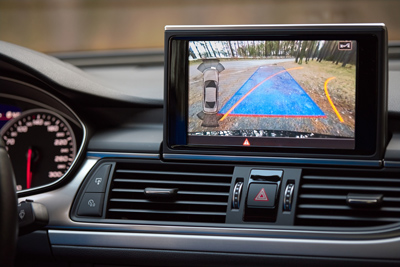The first advanced driver assistance systems (ADAS) appeared in new passenger vehicles in the 1990s with the advent of the first back-up cameras. But it was really in the early 2000s when ADAS began to proliferate.
Each of the progressive technologies---adaptive cruise control, lane departure warning systems, front-crash avoidance systems, night vision, all involving an integrated set of cameras, sensors, radars and lidar---were often more widely first into higher-end model vehicles, before eventually finding their way into a broader swath of the new vehicle population.
In 2019, about 20 automakers agreed to equip all their new vehicles with automatic emergency braking by the fall of 2022, meaning every new vehicle sold today includes at least one---and usually multiple---ADAS systems.
While government and insurance industry data show the increased prevalence of ADAS is beginning to reduce the frequency of accidents, that has so far proven to be less of a threat to the collision repair industry than some may have supposed. Several reasons account for this.
Front-crash warning systems and emergency braking won’t prevent every front-crash accident, for example, but it may slow the speed of a crash enough that a vehicle that may have otherwise been a total loss remains in the repairable category. And the scanning, calibrations, system resets and replacement of ADAS parts have contributed to a significant rise in the severity---and with it, cost---of post-crash vehicle repairs.
That said, ADAS has brought significant challenges for collision repairers. Virtually every vehicle that comes into shops for repairs today must be scanned at least twice---pre- and post-repair---and many require in-process scans during repairs as well.
Shops have had to decide whether to do this work in-house using OEM scan equipment or aftermarket scanners; sublet the work to mobile vendors, dealerships or stand-alone ADAS centers; or use one of several remote scanning companies that have entered the market, which perform the work elsewhere after a shop has connected the vehicle to the company’s device inside the shop.
Scanning involves more than pulling up what diagnostic trouble codes (DTCs) are contained in the vehicle’s electronic systems. Shops must then need to know---or research OEM information---what needs to happen to the vehicle to correct the issues leading to the DTCs.
This can mean electronic resets, test drives using prescribed speeds and road conditions, or recalibrations of vehicle sensors and cameras using specific targets and procedures. It can mean understanding the OEM requirements for the condition of the vehicle, such as ensuring the trunk is empty, the gas tank is full or the tire pressure is correct. Again, shops today are using a combination of solutions for handling this work, either getting the equipment and training to handle it in-house or sublet it to others.
In addition to training and equipment, calibrations often require not-insignificant facility conditions, including a perfectly level floor, lighting and plain walls that don’t “distract” cameras or radars, and enough empty space---often several car lengths---around the vehicle for the proper placement of targets.
It’s these requirements that often limit many shops’ ability to do the work in-house. Rather than continuing to sublet out this increasingly needed work, however, some shops are building standalone ADAS centers to do their own---and in some cases, other shops’---calibration work.
ADAS has also raised the need for collision shops to conduct more detailed research into automaker repair procedures, adding both time and OEM subscription costs. Even something as simple as painting a scratched bumper cover becomes more complex if the automaker limits repair or refinish of parts of the bumper covering a radar or camera, for example.










John Yoswick